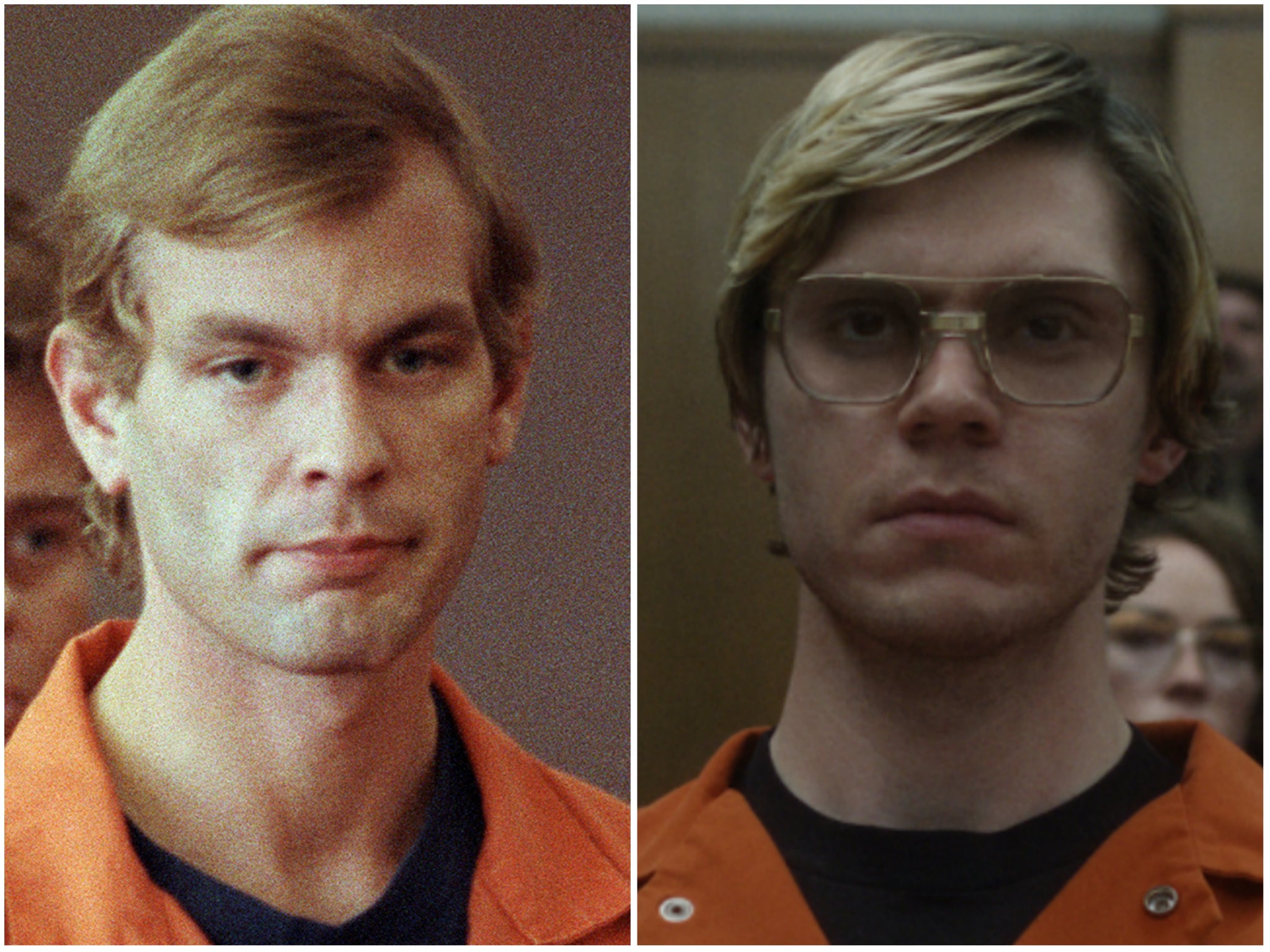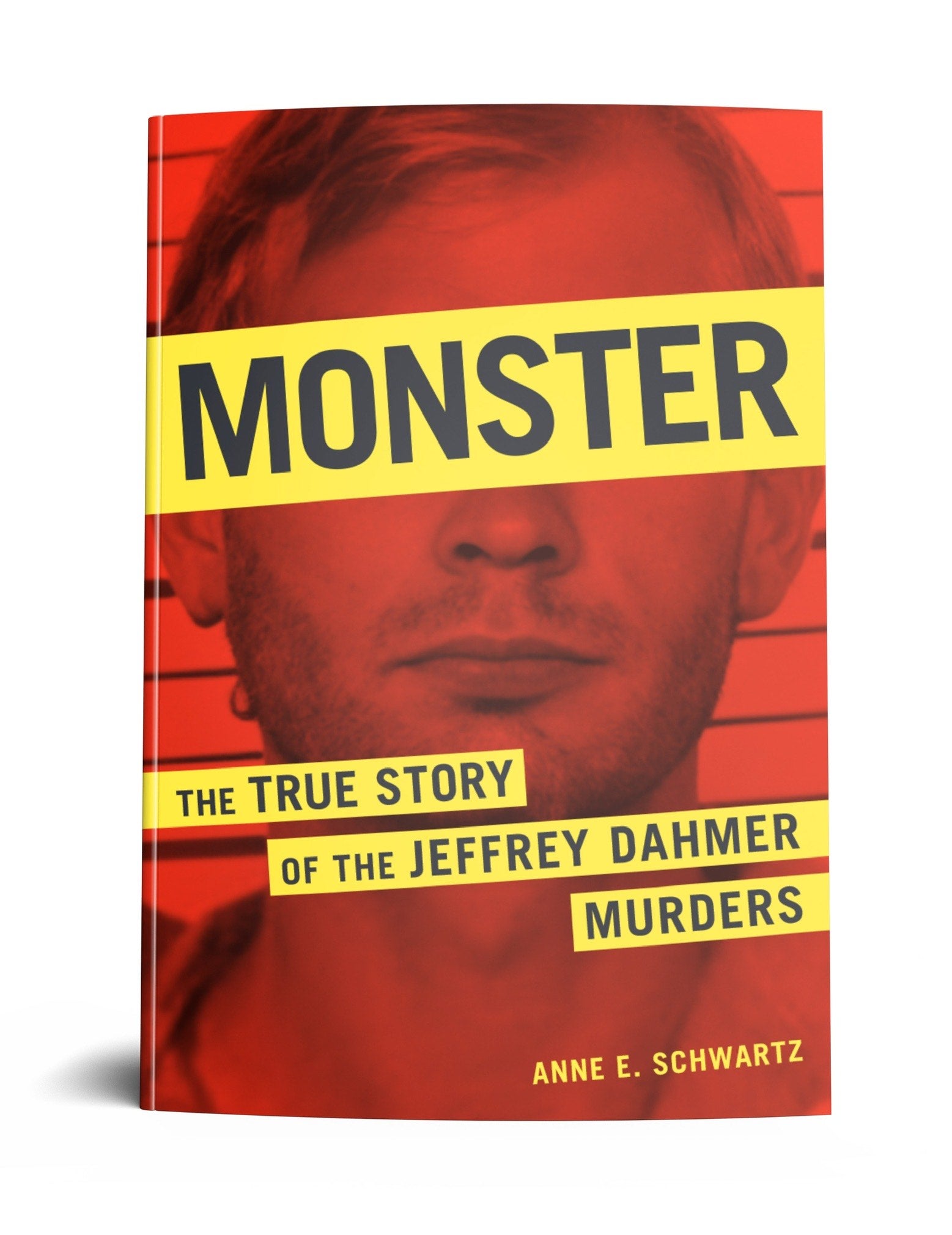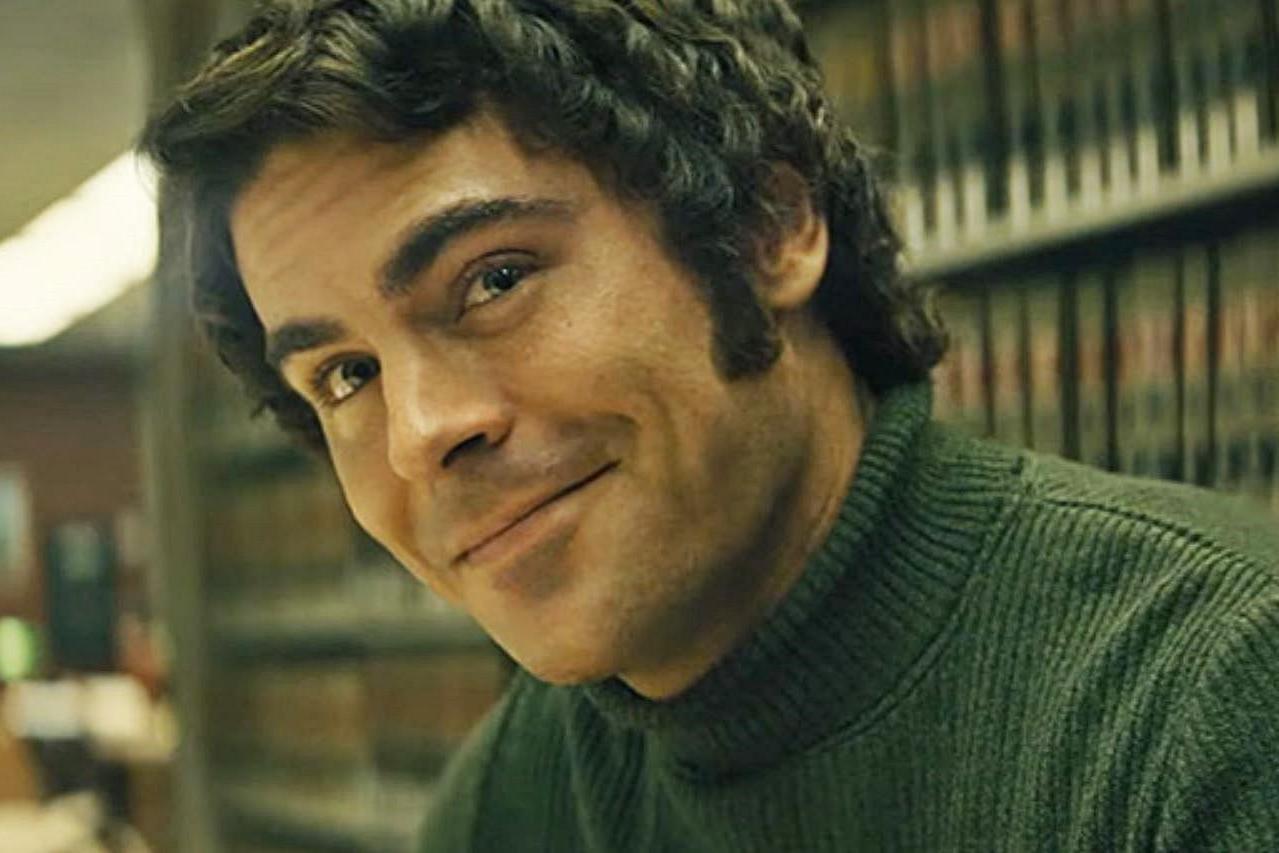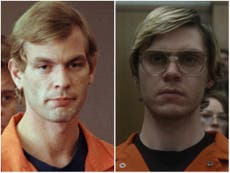Jeffrey Dahmer: Netflix’s ‘exploitative’ new series is reopening victims’ wounds 30 years later
Netflix is under fire for its new dramatisation of Jeffrey Dahmer’s cannabilistic murder spree that has retraumatised victims’ families and been accused of glamourising the horrific nature of his crimes, writes Bevan Hurley


Your support helps us to tell the story
From reproductive rights to climate change to Big Tech, The Independent is on the ground when the story is developing. Whether it's investigating the financials of Elon Musk's pro-Trump PAC or producing our latest documentary, 'The A Word', which shines a light on the American women fighting for reproductive rights, we know how important it is to parse out the facts from the messaging.
At such a critical moment in US history, we need reporters on the ground. Your donation allows us to keep sending journalists to speak to both sides of the story.
The Independent is trusted by Americans across the entire political spectrum. And unlike many other quality news outlets, we choose not to lock Americans out of our reporting and analysis with paywalls. We believe quality journalism should be available to everyone, paid for by those who can afford it.
Your support makes all the difference.In Netflix’s new 10-part series Monster: The Jeffrey Dahmer Story, filmmakers tried to tell the story of one of America’s most gruesome serial murdererers “as authentically as we could”, according to the show’s star Evan Peters.
“It felt important to be respectful to the victims, to the victims’ families,” said Peters in a promotional video posted to Twitter.
“You need to have certain plot points because he did do these things, but you don’t need to embellish them. You know we get it, we don’t need to see it over and over again.”
That lofty sentiment was skewered by Rita Isbell, the sister of Dahmer’s 11th victim Errol Lindsey, whose courtroom confrontation with her brother’s murderer in 1992 was recreated frame-by-frame from news footage for The Jeffrey Dahmer Story.
In an essay for Insider, Ms Isbell said she was not even consulted prior to the secretive project being released, and accused “greedy” Netflix of trying to “make money off of this tragedy”.
“I feel like Netflix should’ve asked if we mind or how we felt about making it. They didn’t ask me anything. They just did it,” she wrote.
In a viral Twitter thread, Ms Isbell’s cousin Eric Perry wrote that the family were being retraumatised over and over again. “And for what? How many movies/shows/documentaries do we need?”
“My cousins wake up every few months at this point with a bunch of calls and messages and they know there’s another Dahmer show. It’s cruel.”
The dramatised series – which has set a record for being the most-watched Week 1 Netflix release in the streaming platform’s history – delves into the psyche of a tormented teenager with a fascination for taxidermy, who later tortures, murders, defiles and dismembers 17 victims over a 14-year period.
Viewers devoured 196 million hours of The Jeffrey Dahmer Story since its launch last Wednesday (21 September), surpassing even Squid Games‘ first week, according to Indiewire.
An expert on true crime told The Independent that dramatised depictions of real life horror stories seemed to be becoming increasingly exploitative.
“There are some really good social justice elements of this true crime phenomenon but I think with something like this you ask yourself ‘what is the point, are we learning something from this’,” Amanda Vicary, Chair of the Psychology Department at Illinois Wesleyan University, told The Independent.
“Knowing that the families were not a part of it and are actively against it is going to make it harder to watch it and enjoy it, you’re going to feel like you’re doing something wrong,” Dr Vicary said.

Those comments were echoed by Mariah Day, whose mother’s murder was depicted in the NBC black comedy The Thing about Pam.
In a recent interview with The Independent, Ms Day told how seeing her mother Betsy Faria’s alleged killer Pam Hupp portrayed by Renee Zellweger in the show had triggered her PTSD.
“We constantly have to see (Hupp’s) face everywhere and see her name everywhere, rather than the lives she took. We are real people. We have to deal with people knowing that it’s our trauma out there.”
Dr Vicary said the explosion in true crime podcasts, television shows and books was a reflection of the genre’s booming popularity.
“Money drives everything and there’s a true crime wave to be ridden. But I can’t imagine having your mother murdered and then shows like this bringing everything back up again. Something that you thought maybe you could move on from and then there it is.”
Dr Vicary is a true crime fan and uses documentary-style podcasts as part of a class where she teaches students about wrongful convictions.
She cites series such as Serial, which helped free Adnan Syed from a Baltimore prison last week after exposing the shortcomings of the prosecution’s case against him, as one of many worthy examples of the genre.

But the singularly horrific nature of the Dahmer story sets it apart, and called for a more sensitive retelling, she says.
“The incident of the boy escaping and law enforcement bringing him back, the number of victims, the cannibalism, it sounds like a horror movie.
“It’s not surprising that fictional accounts have been made of it, you just hope that people can keep in mind that this is real and amongst all the horror and negativity, that these are real people that suffered because of it.”
The makings of a murderer
The Jeffrey Dahmer Story begins towards the end as Dahmer is finally arrested following the escape of one of his victims. Through a series of flashbacks, filmmaker Ryan Murphy sets out to show how little “Jeff” became a monster.
It describes in depth Dahmer’s interest in dissecting dead animals and how this underpinned his relationship with his father Lionel, his difficulty making friends in high school, and his self hatred for being “weird”.
Emmy Award-winning actor Evan Peters discusses what it took to inhabit the mind of Jeffrey Dahmer, the toll it exacted and how he hopes it was all worth it; not only in telling the story of Dahmer, but the stories of his victims and a city that failed them. 9/21 on @Netflix pic.twitter.com/IZtiHDqNHH
— Ryan Murphy Productions (@ryanmurphyprod) September 16, 2022
The amount of time spent trying to decipher the origins of Dahmer’s warped behaviour appears at odds with comments made by the Emmy Award winning star Evan Peters about the project.
“We had one rule going into this from Ryan that it would never be told from Dahmer’s point of view. As an audience, you’re not really sympathising with him,” Peters said.
“You’re not really getting into his plight. You’re more sort of watching it, you know, from the outside.”
Dahmer’s killing binge began in 1978 with the murder of hitchhiker Steven Hicks at his parents’ home in Chippewa Falls, Wisconsin.
Dahmer spent the next decade listlessly drifting in and out of the army, college, and several menial jobs, and was arrested for public masturbation. He began to frequent gay clubs and bathhouses where he would administer sleeping pills to his dates.


In November 1987, Dahmer murdered his next victim, Steven Tuomi. He killed 14-year-old Jamie Doxtator in January 1988 and Richard Guerrero, 25, two months later.
During this period, Dahmer was arrested for drugging and sexually fondling a 13-year-old boy. While at large awaiting sentencing, he murdered his next victim, Anthony Sears.
Seven further murders occurred between May of 1988 and April 1991, as Dahmer honed his technique of luring victims back to his home before drugging and killing them.
The show depicts many of Dahmer’s gruesome crimes, while also attempting to provide an insight into the alleged racism and homophobia shown by law enforcement that allowed him to evade arrest.
That May, Milwaukee’s so-called “Dahmer Summer” began, where Dahmer murdered a further six victims at his Oxford Apartments address between May and July.
They included Laotian immigrant Konerak Sinthasomphone, 14, whose brother Dahmer had molested in 1988.
Konerak escaped from Dahmer’s apartment naked and bleeding only to be taken back there by two Milwaukee police officers, who were recorded making homophobic comments to dispatch. Dahmer later killed Konerak.
Officer John Balcerzak, who placed the teenager back with Dahmer, was fired from the Milwaukee Police Department only to be reinstated after a judge ruled the firing was not warranted. He retired from the police force in 2017.
Glenda Cleveland, a neighbour of Dahmer’s featured in the series who repeatedly pleaded with police to investigate the rancid odours coming from his apartment, died in 2011 aged 56.
The Oxford Apartments block where Dahmer committed the bulk of his murders was razed to the ground in 1992, and remains vacant, according to the Milwaukee Journal-Sentinel.
The reporter who broke the story
Anne E. Schwartz was working as a crime reporter for the Milwaukee Journal in 1991 when she received a call from a police source to say they had found a human head and body parts inside a city apartment.
Rushing to the scene, Ms Schwartz said she arrived to find just a few police officers there, and entered the Oxford Apartments building for a closer look.
“I walked up to Dahmer’s apartment, and I kind of stuck my head in, because you’re a journalist, you want to know,” she told The Independent.
“I guess the thing that was strange was that it didn’t look strange.”

She said officers slowly began to understand the magnitude of the crime scene as they discovered polaroids that Dahmer had taken of his victims in various stages of dismemberment.
“They didn’t know what they were finding,” she said.
“I was a crime reporter for five years so I know what it smells like when you walk into a building with a dead body or a decomposing body. This was not that. This was a very chemical smell.”
Ms Schwartz, who went on to work in communications for the Milwaukee Police Department and Wisconsin Department of Justice, said the depiction of city police officers as racist and homophobic was incorrect.
“I’ve spent a lot of time with them, interviewing the people who were at the scene. Again this is a dramatisation, but at a time when it is not exactly easy for law enforcement to get trust and buy in from the community, it’s not a very helpful representation.”
In the Netflix series, Glenda Cleveland, who tried to alert police to Dahmer’s killing spree, is portrayed as living in a neighbouring apartment. In reality, Ms Cleveland, who died in 2011, lived in a separate building.
“In the first five minutes of the first episode you have Glenda Cleveland knocking on his door. None of that ever happened,” says Ms Schwartz.
“I had trouble with buy-in, because I knew that was not accurate. But people are not watching it that way, they’re watching it for entertainment.”
After publishing a bestseller about the case in 1991, The Man Who Could Not Kill Enough, Ms Schwartz said she received a phone call from Dahmer in the newsroom of a TV station she was working to complain.
Several psychiatrists who had interviewed Dahmer told Ms Schwartz that his behaviour could be attributed to his parents.
“He hated that. For someone who didn’t show any emotion or seem to care about anything, he was very protective about his parents, especially his mother,” she told The Independent.
The phone call was “very quick, and very to the point”.
“He had no inflection in his voice. He was so vanilla, he was so flat. There was nothing. He just said no one was responsible for what I did expect me.”
Ms Schwartz said that Dahmer was very “crafty” in the way he selected his victims. He would speak to them at length in bars and on the street to prey on men who were on the margins of society, and whose disappearance wouldn’t raise any alarm bells.

This, along with his grisly body disposal techniques, helped him get away with murdering 17 boys and men before his crimes were discovered.
Plus, victims of crime in the gay community in Milwaukee in the 1980s and early ‘90s rarely reported offences to police for fear of being outed to family or employers, she said.
After the murders attracted national and international attention, people would regularly turn up at Oxford Apartments looking for souvenirs.
After the murders attracted national and international attention, people would regularly turn up at Oxford Apartments looking for souvenirs.
When Dahmer’s apartment building was razed the year some tried to take bricks and pieces of dirt, and the lot remains vacant and surrounded by high fencing to this day.
While the Dahmer series has smashed Netflix’s Week 1 record for most hours viewed, Ms Schwartz says Milwaukee is “absolutely done with hearing about the case”.
“People in Milwaukee think this is a horrible blemish on the city, they don’t want people to think about it.”
Last year, Ms Schwartz wrote an updated version of the 1991 book, and reinterviewed the principal characters to garner their thoughts 30 years on.
Her new book that came out last October, Monster: The True Story of the Jeffrey Dahmer Murders.
Sexualisation of serial killers
Dr Vicary says the sexualisation of serial killers is another alarming trend to emerge from the glut of recent true crime dramatisations.
“You had that with Zac Efron and the Ted Bundy movie (Netflix’s 2019 crime drama Extremely Wicked; Shockingly Evil and Vile),” Dr Vicary tells The Independent.
“I can’t imagine being flooded by that all the time if you had a loved one who was a victim.”

On social media, comments have flowed about Even Peters’ appearance on the show, with some even expressing an attraction for the serial killer himself.
“Jeffrey Dahmer’s mugshot definitely gives something i didn’t know or think it would give,” wrote one Twitter user, who received 1,300 retweets.
“You will NOT think Evan Peters is hot playing Dahmer,” another posted.
While over on TikTok, the phrase “Jeffrey Dahmer Funny” is trending, where users post clips about “what to do when Dahmer invites you over”.
Clips of supposedly humourous reenactments have attracted tens of millions of views.
Why women are drawn to true crime
Dr Vicary’s research shows that a significant majority of the audience for true crime is women, who are often driven to watch through their fear of becoming a victim of violent crime.
“Women are really drawn to the content when it has something to do with survival, if they are going to learn the psychological content of the criminal, what set him off, how did they escape,” she says.
“We’re drawn to that content because of that fear and because we don’t want it to happen to us.”
She hopes to see the large and growing true crime audience turn off exploitative dramatisations, as that may be the best way of convincing networks against those types of shows.
“There are podcasts and shows where the victims and their loved ones are interviewed, you can see many are willing to speak out if they want their loved one to be memorialised. There’s a lot of stories out there to be told where the people are willing to participate.
“If the victims are outwardly speaking up against the show, hopefully there will be enough public backlash where they don’t want to produce it.”
Netflix did not respond to a request for comment.


Join our commenting forum
Join thought-provoking conversations, follow other Independent readers and see their replies
Comments